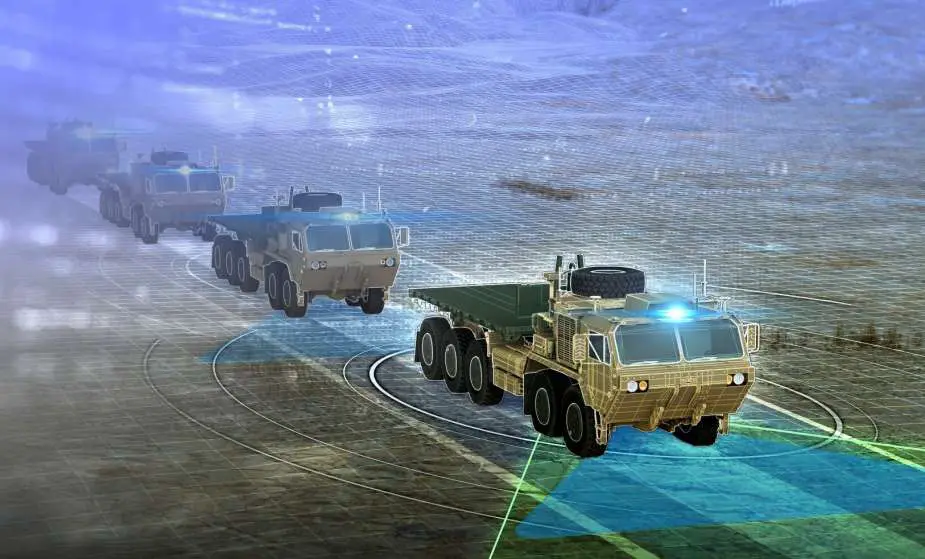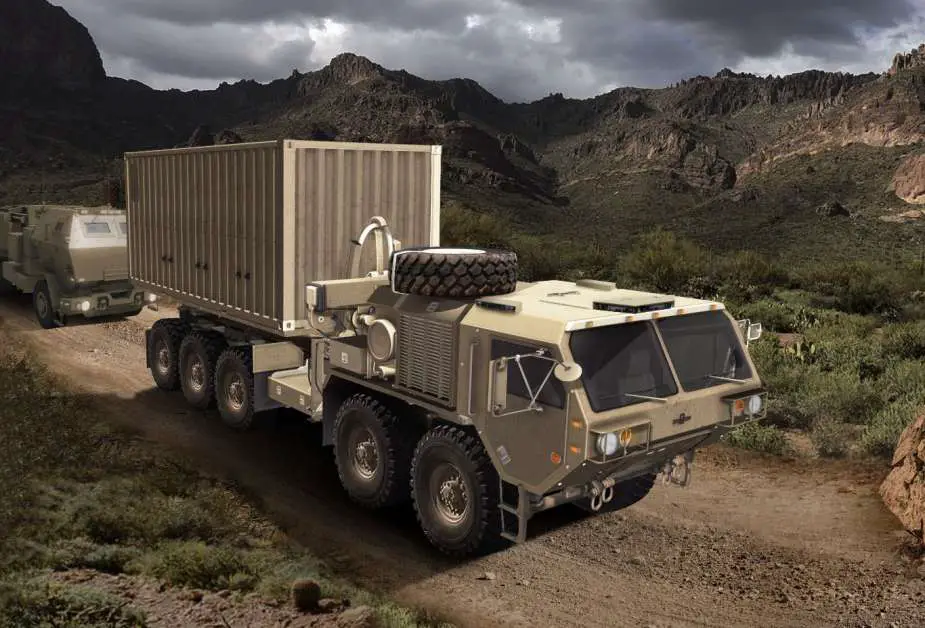Prototyping agreements awarded for US Army's Autonomous Tactical Vehicle System
The U.S. Army last week announced three Other Transaction Authority agreements awarded to Robotics Research Autonomous Industries, Neya Systems, and Carnegie Robotics respectively, valued at $14.8 million to provide four prototypes from each vendor for the Autonomous Tactical Vehicle System, or ATV-S, program. Rae Higgins, Program Executive Office Combat Support & Combat Service Support, reports. This amount represents the base award. The acquisition plan includes options to procure a total of 41 prototypes built.
Follow Army Recognition on Google News at this link

Neya Systems' ATV-S prototype (Illustration source: Neya Systems)
The desired capability of ATV-S is to provide uncrewed operation of tactical wheeled vehicles in support of logistics operations. ATV-S mission sets will include support convoy operations, waypoint navigation, and teleoperations. These mission sets will reduce Soldier exposure to hostile threats while increasing logistics throughput.
The ATV-S program gained Middle Tier Acquisition - Rapid Prototyping Initiation approval in late October this year. Program Executive Office Combat Support & Combat Service Support, or PEO CS&CSS, collaborated with the Defense Innovation Unit (DIU) to issue these Other Transaction agreements, executed under the DIU Commercial Solutions Opening process.
Middle Tier Acquisition pathways are used to rapidly develop fieldable prototypes within an acquisition program to demonstrate new capabilities and/or rapidly field production quantities of systems with proven technologies that require minimal development.
The prototypes awarded under the Other Transaction Authority are potential solutions to convert existing military vehicles into uncrewed vehicles. These systems will be designed to deploy onto the Army’s Palletized Load System, or PLS, with the ability for possible adaptation to other Army tactical wheeled vehicles and other vehicles within the Department of Defense’s fleet.
“The Army is keen on suppliers that can take existing military vehicles – including subsystems, such as trailers – and enhance them for safe, reliable, robust uncrewed operations through hardware and software integration,” said Kyle Bruner, program manager, Force Projection, PEO CS&CSS. “Solutions for both hardware and software components were considered in ATV-S prototype evaluations,” Bruner added.
Offerings ranged from communications systems, autonomy critical hardware (sensors, computers, etc.,) graphical user interfaces for vehicle command and control, teleoperation enhancements, and autonomous navigation software.
According to Kent Shea, product manager of Robotic and Autonomous Systems, PM Force Projection, the approach for this program allows the Army to modernize at the pace of industry, integrating new technologies as they are developed. “Commercial technologies exist that will enable the Army to close technological gaps and continue to advance autonomous capabilities in the future. Now is an opportune time to modernize with ATV-S in support of Multi Domain Operations in contested environments,” he explained.
ATV-S’ desired characteristics include:
• Increasing material throughput by eliminating the need for operator work/rest cycles.
• Removing Soldiers from the vehicles.
• Providing commanders flexibility of autonomous modes to suit mission requirements.
• Providing safe, reliable, and cyber-secure operation.
Each OTA provides a base award to support the initial program demonstration phase and two additional option phases. The base award for the first phase of the program calls for the three offerors to each build and deliver four prototypes. These prototypes will be evaluated through demonstrations planned in Fiscal Year 2024. Program plans include selecting up two of the original OTA-awarded contractor solutions to proceed into Phase 2, where they will participate in formal Army Test and Evaluation using the four Phase 1 Demo prototypes and add two more for further evaluation.
Phase 3 culminates in selecting one contractor solution to build the First Unit of Issue (FUI) assets, where it will use all six prototypes from the previous phases, and add 35 more for a total of 41 prototypes in support of the FUI event.
PEO CS&CSS’ military and civilian acquisition professionals are responsible for the life cycle of approximately 20 percent of the Army's total equipment programs spanning the Engineer, Maneuver, Ordnance, Quartermaster, and Transportation portfolios.
DIU strengthens national security by accelerating the adoption of commercial technology throughout the military and bolstering our allied and national security innovation bases. DIU partners with organizations across the Department of Defense (DoD)to rapidly prototype and field dual-use capabilities that solve operational challenges at speed and scale.

Carnegie Robotics' ATV-S prototype (Picture source: Carnegie Robotics)
Defense News December 2023


























